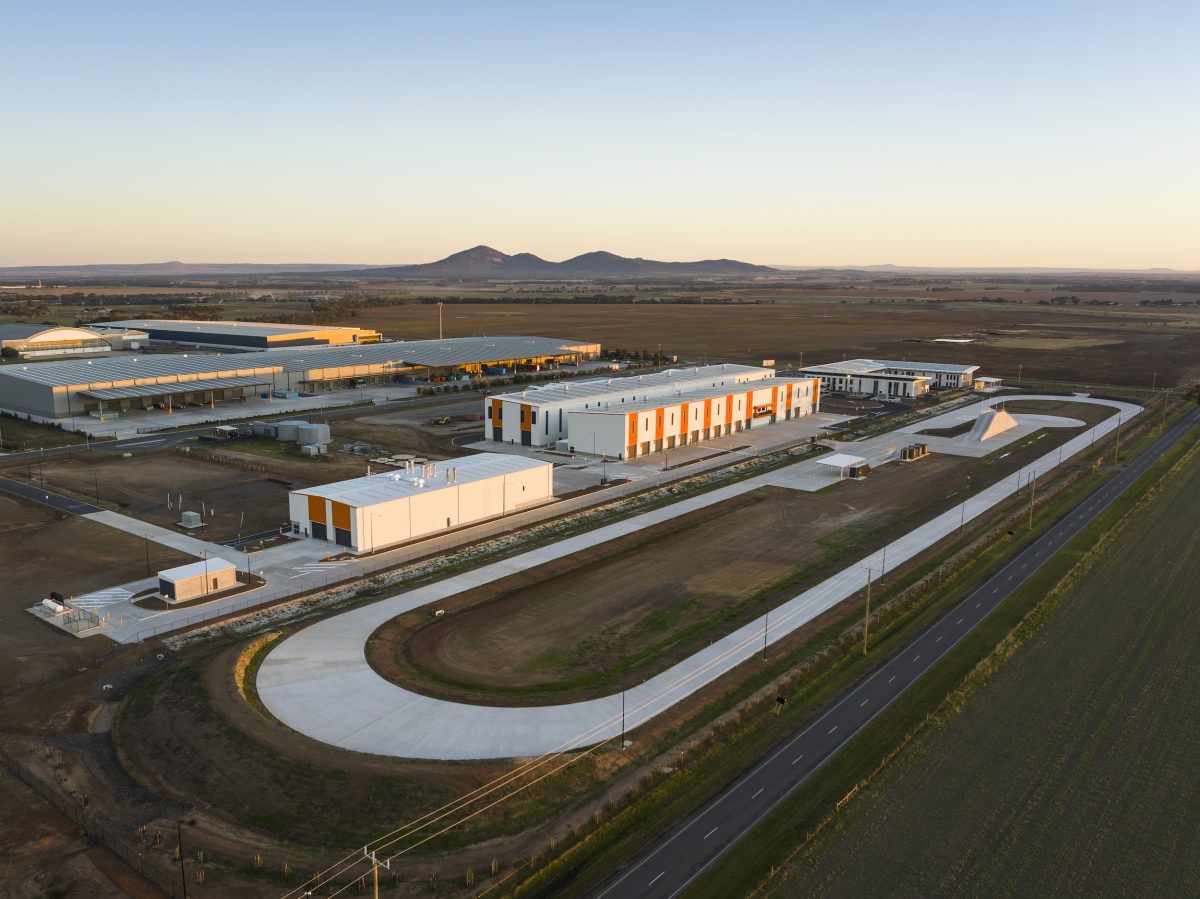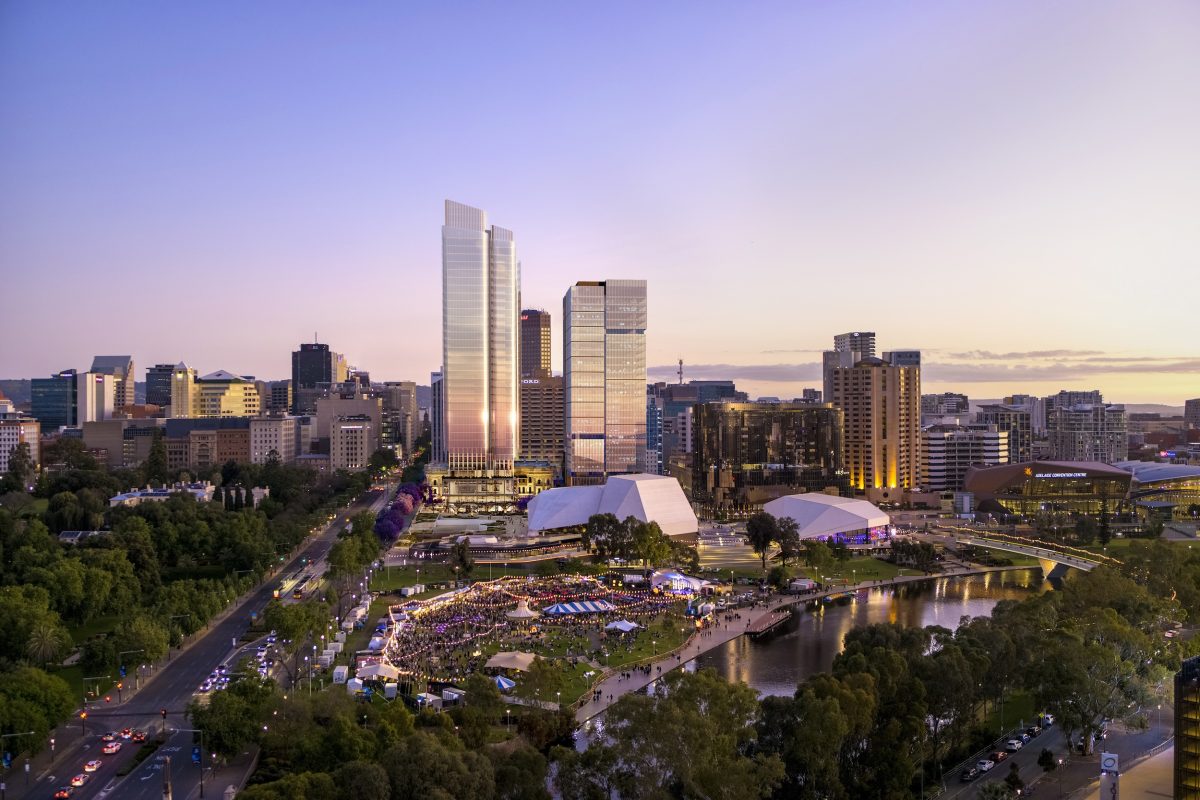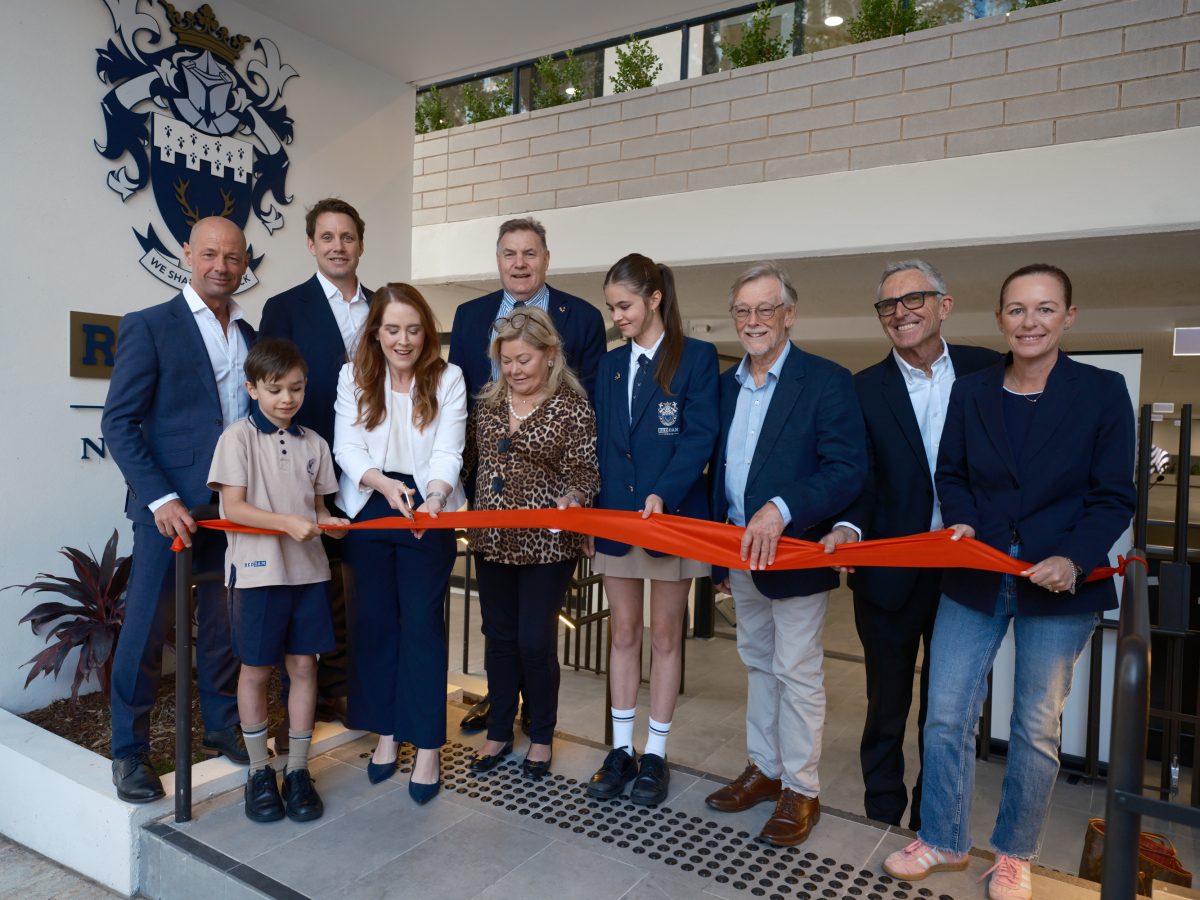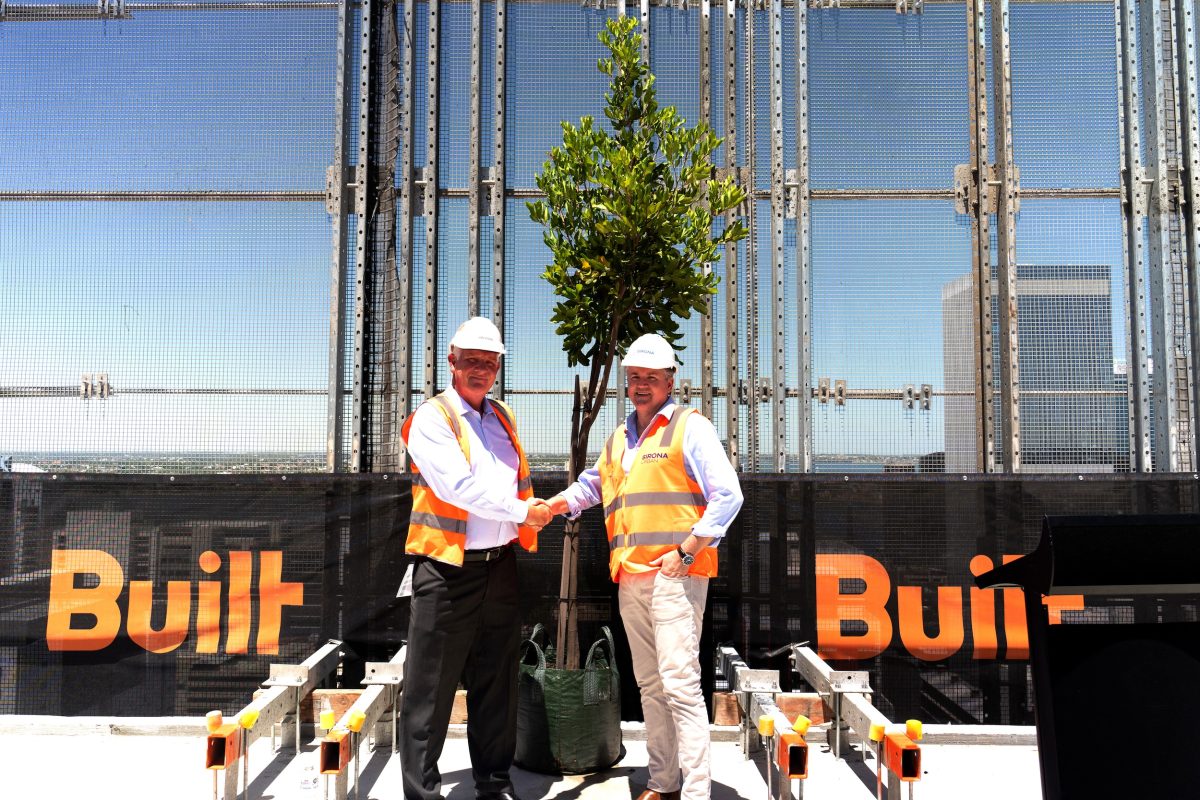Innovative digital construction drives early completion of Hanwha facility
Defence projects are notorious for running over budget and behind schedule. But in defiance of the norm, construction firm Built, in partnership with Hanwha Defence Australia (HDA), has delivered an important new production facility well ahead of time, thanks largely to its innovative digital-first construction methodology that has set a new standard for efficiency and collaboration.
Following its successful bid to deliver the first stage of Hanwha’s Armoured Vehicle Centre of Excellence (H-ACE), Australian-owned tier-one construction firm Built started work on the project in September 2022.
The ambitious program aimed for completion and handover by early August this year, in time for HDA to meet schedule requirements.
The stage one scope awarded to Built as HDA’s main contractor involved designing and constructing the 32,000sqm H-ACE facility at the Avalon Airport Precinct near Geelong in Victoria – initially focused on producing Hanwha’s AS9 self-propelled howitzer and AS10 armoured ammunition resupply vehicle under the LAND 8116 phase one Protected Mobile Fires program.
Built’s Victorian general manager, Jack Robson, says the initial program was “tight but achievable”, as is typical in a competitive tender environment.
Thanks to its digital-first approach, Built delivered the project on May 21, 2½ months early.
“Completing a project that far ahead of schedule is rare in any sector,” says Robson, “and we handed over with only 12 defects – all closed out in the first week.”
Built Group chief executive Brett Mason says digital-first construction allows for the entire project to be digitally modelled with a fully resolved design before starting on site. This eliminates design clashes, enables early procurement of materials and facilitates subcontractor and supply chain agreements much earlier than would otherwise be possible.
He says the technology at its core was developed across the past 10 years with the introduction of building information modelling, but only recently have digitally enabled contractors been able to harness its value. Built has invested heavily in digital systems across the past 10 years, upwards of $30m, positioning it at the forefront of innovation in the construction industry.
Robson says one of the primary challenges with the H-ACE project was the low level of design at the tender stage and the requirement to re-create HDA’s existing production facility for self-propelled howitzers in South Korea, adapting it to Australian codes and standards.
“The client was fantastic,” says Robson, “but being headquartered in South Korea meant we required close collaboration to manage the technical details.”
With its digital-first approach to construction, Robson says the team was able to “avoid emails with technical jargon” by creating a digital environment with models for the design team to collaborate on. “This included the supply chain, services contractors and steel contractors, all working in a 3D collaborative space to resolve clashes and construct the project digitally before starting on site,” he says.
“When you create a digital platform that everyone can use, you bring in varying skill sets of different construction personnel. Installers, site supervisors, and others – everyone can view the model. What was a tool for a few becomes a tool for many.”
Built used virtual reality to engage stakeholders, including subcontractors, allowing them to view and suggest changes to the project in real time, ensuring buy-in as the project progressed.

This enabled viewing of the as-built status, updated through 3D photo capture and point cloud scans. “This is really beneficial for regional or international clients, as it facilitates better project management and communication,” says Robson.
Traditionally, specifications, material lists and 2D drawings were the norm, he says, but with virtual reality, stakeholders can actually view the project.
“Whether it’s a building manager or an end-user client, they don’t need to be versed in reading 2D architectural drawings, specifications and briefs. They can go through a virtual mock-up and suggest changes to elements like height and colour. This is particularly helpful for clients who are not involved in building every day.”
Built also conducted high-risk quality workshops with HDA, examining different materials and detailing. Difficult-to-achieve products or details were substituted out, facilitated by its digital-first approach. Another key benefit, says Robson, was that digital modelling enabled a greater degree of prefabrication.
“We prefabricated all the steel, secondary framing, roofing and cladding offsite, ensuring quicker and more accurate installation on-site. This approach removes the element of rework required if the design is not resolved,” he says.
“When you utilise a digital environment like this, it’s like assembling a Meccano set on site with all the spatial requirements and service provisions integrated right into the design.”
Following its successful bid to deliver the first stage of Hanwha’s Armoured Vehicle Centre of Excellence (H-ACE), Australian-owned tier-one construction firm Built commenced work on the project in September 2022. The ambitious program aimed for completion and handover by early August 2024, in time for HDA to meet schedule requirements.
The Stage 1 scope awarded to Built as HDA’s main contractor involved designing and constructing the 32,000sq m H-ACE facility at the Avalon Airport Precinct near Geelong in Victoria – initially focused on producing Hanwha’s AS9 Self-Propelled Howitzer and AS10 Armoured Ammunition Resupply Vehicle under the LAND 8116 Phase 1 Protected Mobile Fires program.
Jack Robson, Built’s Victorian general manager, says the initial program was “tight but achievable”, as is typical in a competitive tender environment.
Thanks to its digital-first approach, Built delivered the project on May 21, two and a half months early. “Completing a project that far ahead of schedule is rare in any sector,” says Robson, “and we handed over with only 12 defects – all closed out in the first week.”
Built Group chief executive, Brett Mason, says digital-first construction allows for the entire project to be digitally modelled with a fully resolved design before starting on site.
This eliminates design clashes, enables early procurement of materials and facilitates subcontractor and supply chain agreements much earlier than would otherwise be possible.
He says the technology at its core was developed over the past 10 years with the introduction of Building Information Modelling, but only recently have digitally enabled contractors been able to harness its value. Built has invested heavily in digital systems over the past 10 years, upwards of $30m, positioning it at the forefront of innovation in the construction industry.
Robson says one of the primary challenges with the H-ACE project was the low level of design at the tender stage, and the requirement to recreate HDA’s existing production facility for self-propelled Howitzers in South Korea, adapting it to Australian codes and standards.
“The client was fantastic,” says Robson, “but being headquartered in South Korea, meant we required close collaboration to manage the technical details.”
With its digital-first approach to construction, Robson says the team was able to “avoid emails with technical jargon” by creating a digital environment with models for the design team to collaborate with. “This included the supply chain, services contractors and steel contractors, all working in a 3D collaborative space to resolve clashes and construct the project digitally before starting on site,” he says.
“When you create a digital platform that everyone can use, you bring in varying skill sets of different construction personnel. Installers, site supervisors, and others – everyone can view the model. What was a tool for a few becomes a tool for many.”
Built used virtual reality to engage stakeholders, including subcontractors, allowing them to view and suggest changes to the project in real time, ensuring buy-in as the project progressed.
This enabled viewing of the as-built status, updated through 3D photo capture and point cloud scans. “This is really beneficial for regional or international clients, as it facilitates better project management and communication,” says Robson.
Traditionally, specifications, material lists and 2D drawings were the norm, he says, but with virtual reality, stakeholders can actually view the project.
“Whether it’s a building manager or an end-user client, they don’t need to be versed in reading 2D architectural drawings, specifications and briefs. They can go through a virtual mock-up and suggest changes to elements like height and colour. This is particularly helpful for clients who are not involved in building every day.”
Built also conducted high-risk quality workshops with HDA, examining different materials and detailing. Difficult-to-achieve products or details were substituted out, facilitated by its digital-first approach. Another key benefit, says Robson, was that digital modelling enabled a greater degree of prefabrication.
“We prefabricated all the steel, secondary framing, roofing and cladding offsite, ensuring quicker and more accurate installation on-site. This approach removes the element of rework required if the design is not resolved,” he says.
“When you utilise a digital environment like this, it’s like assembling a Meccano set on site with all the spatial requirements and service provisions integrated right into the design.”
This article was first published in The Australian on Wednesday 24 July and has been republished with permission.


